NORALIN 2MG INJECTION 2ML

MRP ₹40
(Inclusive of all Taxes)
₹6.0 Cashback (15%)
know your delivery time
Provide Delivery Location
Composition :
Manufacturer/Marketer :
Consume Type :
Expires on or after :
Return Policy :

Secure Payment

Trusted by 8 Crore Indians

Genuine Products
Therapeutic Class
Country of origin
Manufacturer/Marketer address
Author Details
We provide you with authentic, trustworthy and relevant information
Disclaimer
Alcohol
Safe if prescribed
Interaction of NORALIN 2MG INJECTION 2ML with alcohol is unknown. Please consult a doctor before consuming alcohol while using NORALIN 2MG INJECTION 2ML.
Pregnancy
Consult your doctor
NORALIN 2MG INJECTION 2ML is a category C pregnancy drug and is given to pregnant women only if the doctor thinks benefits outweigh risks. Please consult a doctor if you are pregnant.
Breast Feeding
Consult your doctor
NORALIN 2MG INJECTION 2ML is given to breastfeeding women only if the doctor thinks benefits are greater than risks. Please consult a doctor if you are breastfeeding.
Driving
Safe if prescribed
Drive only if you are alert after taking NORALIN 2MG INJECTION 2ML. However, NORALIN 2MG INJECTION 2ML is generally given for hospitalised patients.
Liver
Consult your doctor
NORALIN 2MG INJECTION 2ML should be given with caution, especially if you have a history of Liver diseases/conditions. The dose may be adjusted by your doctor as required.
Kidney
Consult your doctor
NORALIN 2MG INJECTION 2ML should be given with caution, especially if you have a history of Kidney diseases/conditions. The dose may be adjusted by your doctor as required.
Children
Safe if prescribed
NORALIN 2MG INJECTION 2ML is not recommended for children as the safety and effectiveness were not established.
Product Substitutes
About NORALIN 2MG INJECTION 2ML
NORALIN 2MG INJECTION 2ML belongs to a class of medications called antihypotensives primarily used to treat hypotensive (low blood pressure) emergencies. Hypotension is a condition in which the blood flows through the blood vessels at lower than normal pressures. Low blood pressure symptoms include tiredness, dizziness, light-headedness, loss of consciousness, nausea, depression, blurry vision, or clammy (wet or sweaty) skin.
NORALIN 2MG INJECTION 2ML contains Norepinephrine that works by constricting and narrowing blood vessels by acting on alpha receptors that cause muscle contractions. Thus, it increases heart rate and blood pressure.
You are advised to take NORALIN 2MG INJECTION 2ML for as long as your doctor has prescribed it for you based on your medical condition. In some cases, you may experience headaches, anxiety, tremor, difficulty in breathing, vomiting, high blood pressure, or urinary retention. Most of these side effects of NORALIN 2MG INJECTION 2ML do not require medical attention and gradually resolve over time. However, if the side effects persist, please consult your doctor.
If you are allergic to NORALIN 2MG INJECTION 2ML or any other medicines, please tell your doctor. Please consult a doctor if you are pregnant or breastfeeding before taking NORALIN 2MG INJECTION 2ML. NORALIN 2MG INJECTION 2ML is not recommended for children. If you have irregular heartbeats, hyperthyroidism (overactive thyroid gland), diabetes, angina pectoris (chest pain), vascular blockage in limbs or stomach, any heart problems, or if you recently had a heart attack, inform your doctor before taking NORALIN 2MG INJECTION 2ML. If it is essential to administer NORALIN 2MG INJECTION 2ML simultaneously as plasma or blood transfusion, plasma or blood may be administered in a separate drip.
Uses of NORALIN 2MG INJECTION 2ML
Medicinal Benefits Mweb
Key Benefits
NORALIN 2MG INJECTION 2ML contains Norepinephrine used in the treatment of hypotensive (low blood pressure) emergencies. NORALIN 2MG INJECTION 2ML constricts and narrows blood vessels by acting on alpha receptors that cause muscle contractions. Thus, NORALIN 2MG INJECTION 2ML redirects blood to heart and brain by narrowing blood vessels in the extremities, which increases heart rate and blood pressure. NORALIN 2MG INJECTION 2ML is used to restore blood pressure to normal in emergencies that require an immediate rise in blood pressure to a normal level.
Directions for Use
Side Effects of NORALIN 2MG INJECTION 2ML
- Headache
- Anxiety
- Tremor
- Difficulty in breathing
- Vomiting
- High blood pressure
- Urinary retention
Drug Warnings
If you are allergic to NORALIN 2MG INJECTION 2ML or any other medicines, please tell your doctor. Please consult a doctor if you are pregnant or breastfeeding before taking NORALIN 2MG INJECTION 2ML. NORALIN 2MG INJECTION 2ML is not recommended for children. If you have irregular heartbeats, hyperthyroidism (overactive thyroid gland), diabetes, angina pectoris (chest pain) or any vascular blockage in limbs or stomach, any heart problems, or if you recently had a heart attack, inform your doctor before taking NORALIN 2MG INJECTION 2ML. If it is essential to administer NORALIN 2MG INJECTION 2ML at the same time as plasma or blood transfusion, plasma or blood may be administered in a separate drip. NORALIN 2MG INJECTION 2ML is not recommended for patients suffering from low blood pressure caused by hypovolaemia (low blood volume).
Drug-Drug Interactions
Drug-Drug Interactions
Login/Sign Up
Nortriptyline can enhance the effects of Noralin 2mg Injection 2ml on blood pressure.
How to manage the interaction:
Although taking Noralin 2mg Injection 2ml and Nortriptyline together can cause an interaction, it can be taken if your doctor has suggested it. It's important to keep an eye on your blood pressure regularly. Do not stop using any medications without a doctor's advice.
Doxepin can enhance the effects of Noralin 2mg Injection 2ml on blood vessel constriction.
How to manage the interaction:
Although taking Doxepin and Noralin 2mg Injection 2ml together can cause an interaction, it can be taken if your doctor has suggested it. However, if you experience any symptoms, contact your doctor immediately. Do not stop using any medications without a doctor's advice.
Clomipramine can enhance the effects of Noralin 2mg Injection 2ml on blood pressure.
How to manage the interaction:
There may be a possibility of interaction between Noralin 2mg Injection 2ml and Clomipramine, but it can be taken if prescribed by a doctor. It's important to keep an eye on your blood pressure regularly. Do not stop using any medications without talking to a doctor.
Co-administration of Amitriptyline and Noralin 2mg Injection 2ml may lead to unusual side effects.
How to manage the interaction:
Noralin 2mg Injection 2ml and amitriptyline could interact, but they can still be taken if they are prescribed by a doctor. Noralin 2mg Injection 2ml and amitriptyline shouldn't be combined unless a medical emergency arises. Even when you are lying down or have your head up, it is crucial to keep a watchful eye on your blood pressure. Also, keep an eye out for any unusual side effects. Without consulting a doctor, never stop taking any medications.
Noralin 2mg Injection 2ml may interfere with blood glucose control and reduce the effectiveness of tirzepatide and other diabetic medications.
How to manage the interaction:
It is important to tell your doctor about all other medications you use, including vitamins and herbs. Do not stop using any medications without first talking to your doctor. Monitor your blood sugar levels closely.
Drug-Food Interactions
Drug-Food Interactions
Login/Sign Up
Drug-Diseases Interactions
Drug-Diseases Interactions
Login/Sign Up
Drug-Drug Interactions Checker List
- IMIPRAMINE
- DULOXETINE
- VENLAFAXINE
- PHENELZINE
- MOCLOBEMIDE
- LINEZOLID
- METHYLENE BLUE
Habit Forming
Special Advise
Regular monitoring of heart rate and blood pressure are recommended while taking NORALIN 2MG INJECTION 2ML.
Diet & Lifestyle Advise
- Eat small meals more frequently.
- Drink plenty of fluids to stay hydrated as dehydration may reduce blood volume resulting in low blood pressure.
- Include vitamin B12-rich foods such as animal meats, eggs, fortified cereals, and nutritional yeast.
- Eat foods rich in folates such as beans, asparagus, lentils, leafy greens, citrus fruits, liver, and eggs.
- Try to eat smoked fish, canned soup, pickled items, cottage cheese, and olives as salty foods can also increase blood pressure.
- Take frequent breaks if you exercise outdoors in extreme heat.
- Avoid spending a long time in hot tubs, steam rooms, and saunas to prevent dehydration.
All Substitutes & Brand Comparisons
RX
Out of StockAficard 2mg Injection
₹22
(₹19.8/ 1ml)
10% COSTLIERRX
Nor Epineph 2Ml Inj 5'S
Themis Chemicals Ltd
₹45
(₹40.5 per unit)
125% COSTLIERRX
Out of StockNorshot 2Ml Inj
Swiss Life Sciences
₹195
(₹87.75/ 1ml)
387% COSTLIER

Have a query?
Buy best Cardiology products by
Torrent Pharmaceuticals Ltd
Sun Pharmaceutical Industries Ltd
Lupin Ltd
Intas Pharmaceuticals Ltd
Cipla Ltd
Micro Labs Ltd
Macleods Pharmaceuticals Ltd
Abbott India Ltd
Ajanta Pharma Ltd
Ipca Laboratories Ltd
Eris Life Sciences Ltd
Mankind Pharma Pvt Ltd
Lloyd Healthcare Pvt Ltd
Dr Reddy's Laboratories Ltd
Glenmark Pharmaceuticals Ltd
Emcure Pharmaceuticals Ltd
Alembic Pharmaceuticals Ltd
Alkem Laboratories Ltd
East West Pharma India Pvt Ltd
USV Pvt Ltd
Zydus Healthcare Ltd
Aristo Pharmaceuticals Pvt Ltd
Elbrit Life Sciences Pvt Ltd
J B Chemicals & Pharmaceuticals Ltd
Zydus Cadila
Akumentis Healthcare Ltd
Alteus Biogenics Pvt Ltd
Hbc Life Sciences Pvt Ltd
Fusion Health Care Pvt Ltd
Troikaa Pharmaceuticals Ltd
La Renon Healthcare Pvt Ltd
Corona Remedies Pvt Ltd
Jubilant Lifesciences Ltd
Medley Pharmaceuticals Ltd
Knoll Healthcare Pvt Ltd
Msn Laboratories Pvt Ltd
Zuventus Healthcare Ltd
Cadila Pharmaceuticals Ltd
Blue Cross Laboratories Pvt Ltd
Lividus Pharmaceuticals Pvt Ltd
Morepen Laboratories Ltd
Ranmarc Labs
Shrrishti Health Care Products Pvt Ltd
Sanofi India Ltd
Steris Healthcare
Elder Pharmaceuticals Ltd
Primus Remedies Pvt Ltd
Unison Pharmaceuticals Pvt Ltd
Eswar Therapeutics Pvt Ltd
Knoll Pharmaceuticals Ltd
Tas Med India Pvt Ltd
Systopic Laboratories Pvt Ltd
Indiabulls Pharmaceuticals Pvt Ltd
Leeford Healthcare Ltd
Sinsan Pharmaceuticals Pvt Ltd
Biochem Pharmaceutical Industries Ltd
Cadila Healthcare Ltd
Azkka Pharmaceuticals Pvt Ltd
Nirvana India Pvt Ltd
Orsim Pharma
Prevego Healthcare & Research Pvt Ltd
Econ Healthcare
Elinor Pharmaceuticals (P) Ltd
FDC Ltd
Sunij Pharma Pvt Ltd
Nicholas Piramal India Ltd
Astra Zeneca Pharma India Ltd
Pfizer Ltd
Lia Life Sciences Pvt Ltd
Shine Pharmaceuticals Ltd
Elicad Pharmaceuticals Pvt Ltd
Indoco Remedies Ltd
Proqol Health Care Pvt Ltd
Vasu Organics Pvt Ltd
Biocon Ltd
Opsis Care Lifesciences Pvt Ltd
Johnlee Pharmaceuticals Pvt Ltd
Merck Ltd
Wockhardt Ltd
Auspharma Pvt Ltd
Ergos Life Sciences Pvt Ltd
Lakshya Life Sciences Pvt Ltd
Ordain Health Care Global Pvt Ltd
Pficus De Med Pvt Ltd
ALICAN PHARMACEUTICAL PVT LTD
RPG Life Sciences Ltd
Glynis Pharmaceuticals Pvt Ltd
Orris Pharmaceuticals
Samarth Life Sciences Pvt Ltd
Aprica Pharmaceuticals Pvt Ltd
Aretaeus Pharmaceuticals Pvt Ltd
Koye Pharmaceuticals Pvt Ltd
Neocardiab Care
Retra Life Science Pvt Ltd
Alniche Life Sciences Pvt Ltd
Alvio Pharmaceuticals Pvt Ltd
Arkas Pharma Pvt Ltd
Atos Lifesciences Pvt Ltd
Divine Savior Pvt Ltd
Metalis Lifesciences Pvt Ltd






